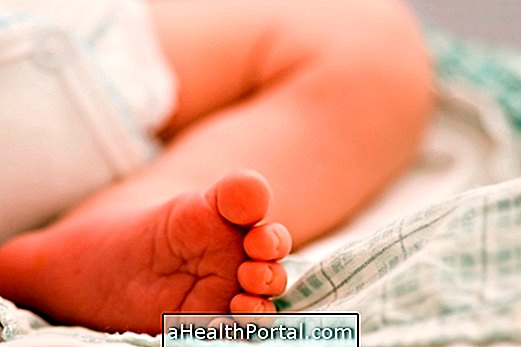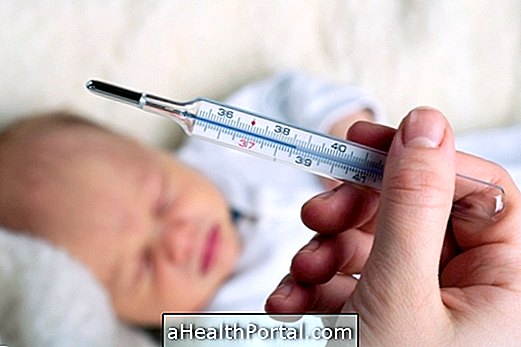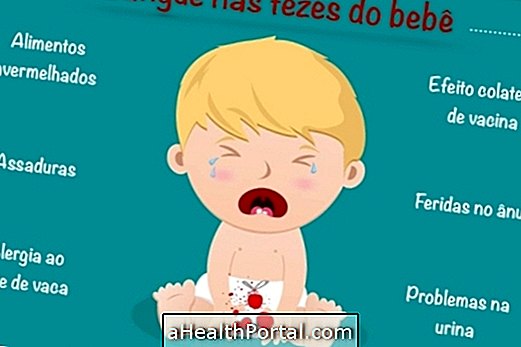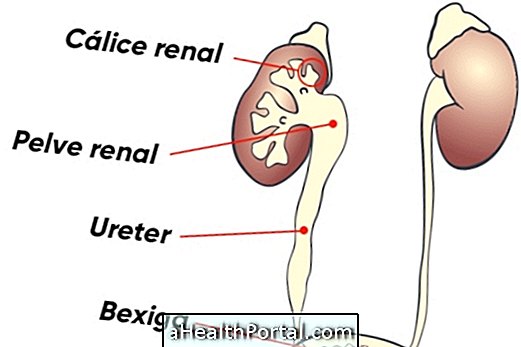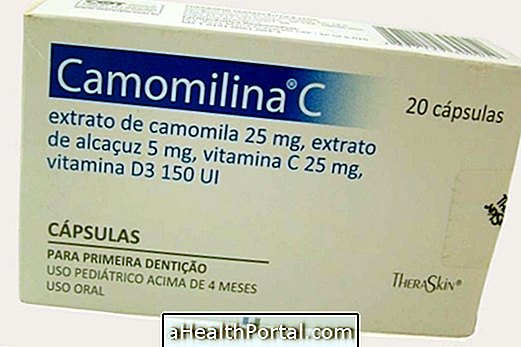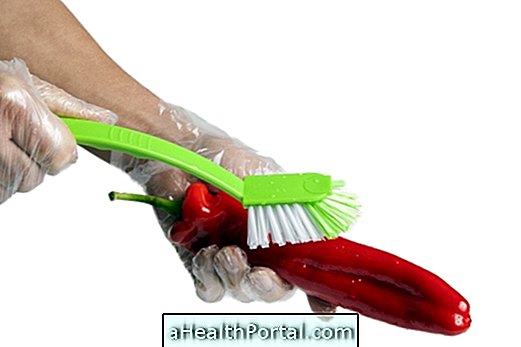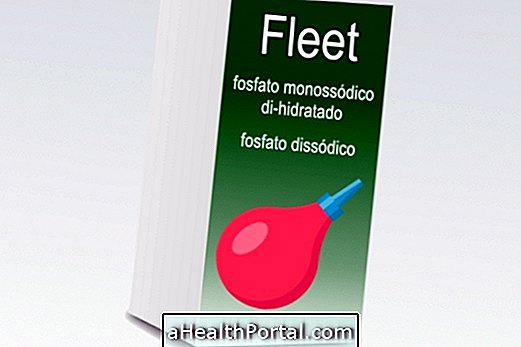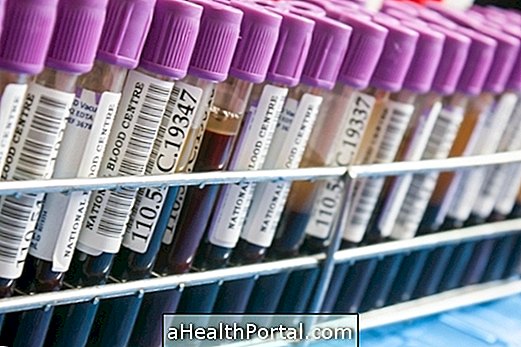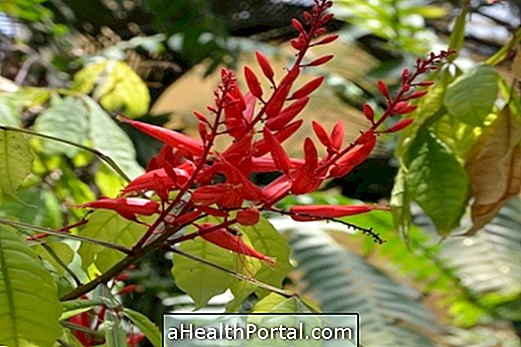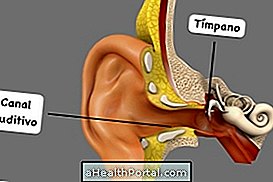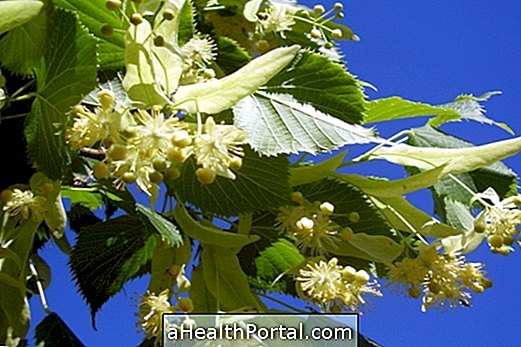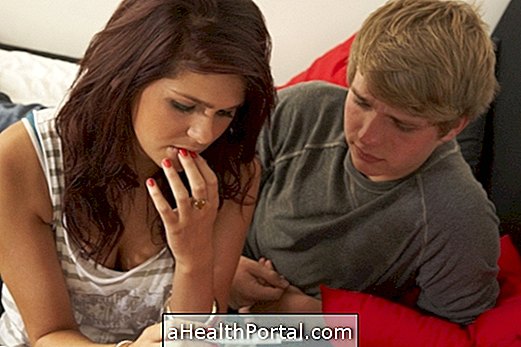The occult spina bifida, like the spina bifida cystica, are congenital malformations that develop in the baby during the first 4 weeks of pregnancy, characterized by a failure in the development of the spine and an incomplete formation of the spinal cord and the structures that they protect it.
Usually, this injury occurs at the back of the spine because it is the last portion of the spine to close, creating a bulge in the baby's back. Its causes may be related to maternal deficiency of folic acid in pregnancy, for example.
Photo of spina bifida
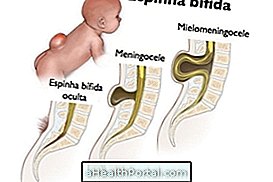
This image shows the types of spina bifida, spina bifida oculta, and spina bifida cistica, which are divided into meningocele and myelomeningocele.
The spina bifida does not always cause problems in the child, as is the case of the hidden spina bifida, but depending on the type of spina bifida, the child may have paralysis of the lower limbs or urinary and fecal incontinence, for example.
The spina bifida has no cure, but can be treated with surgery to reintroduce and close the spinal defect, although complications may not always be avoided with this surgery. Physical therapy for spina bifida is also an important aid in treatment, to promote the independence of the child.
Causes of spina bifida
The causes of spina bifida are not yet fully understood, but are believed to be related to genetic factors or maternal deficiency of folic acid, maternal diabetes, maternal zinc deficiency and alcohol intake during the first 3 months of pregnancy.
Types of spina bifida
Types of spina bifida include:
- Hidden spina bifida, which is characterized by the incomplete closure of the spine, and there is no involvement of the spinal cord and the structures that protect it. It may pass unnoticed, usually does not present neurological problems and is more frequent in the inferior part of the column, between the vertebrae L5 and S1, being able to occur abnormal presence of hair and a spot in that region;
- Spina bifida cystica, characterized by the incomplete closure of the spine, with involvement of the spinal cord and the structures that protect it, through a protrusion on the back of the baby. It can be divided into:
- Meningocele, which is the lighter form of cystic spina bifida, because the protrusion on the baby's back involves only the structures that protect the spinal cord, leaving the spinal cord inside the vertebrae, as is normal. The protrusion is lined by the skin and in this case the baby does not present neurological problems because the conduction of the nerve impulses normally occurs;
- Myelomeningocele, which is the most severe form of cystic spina bifida, because the protrusion on the baby's back contains, in addition to the structures that protect the spinal cord, part of it. The protrusion is not lined by the skin, being open and in this case the baby presents neurological problems because the transmission of nerve impulses does not occur.
Thus, myelomeningocele can cause problems such as paralysis in the legs, changes in sensitivity below injury, problems in locomotion, urinary and fecal incontinence, and learning problems.
Often, myelomeningocele is related to hydrocephalus, which is the increase of cerebrospinal fluid in the brain.
Treatment for spina bifida
Treatment for spina bifida depends on its type. The hidden spina bifida, in most cases, does not require treatment.
In the case of spina bifida cystica, the treatment consists of surgery that must be performed in the first days of the child's life to reintroduce all the structures inside the spine and close the defect in the spine. However, this surgery can not always avoid some neurological problems.
In myelomeningocele, shortly after birth until being operated on, the baby should lie on his belly down so that the lesion that is open is covered with swabs soaked in saline to avoid infection.
When there is spina bifida sacra with hydrocephalus, surgery is also done to drain excess fluid from the brain into the abdomen to prevent or reduce the consequences.
In addition to surgery, physiotherapy for cystic spina bifida is a very important treatment option. It aims to help the child be as independent as possible by helping her walk or use a wheelchair, prevent the development of contractures and deformities, and control the bladder and bowel muscles.
Useful links:
- Hidden spina bifida
- Myelomeningocele
